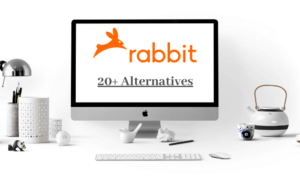A new MacBook should not have performance issues unless something went wrong in the manufacturing process. Nevertheless, even if MacBooks are reliable, there will still come a time when you notice how much slower applications load or how you need to restart the computer more often to prevent memory leaks.
Does this call for getting a replacement? Not necessarily. Before you start looking at new MacBook models, why not take some time and try the suggestions below? You should be able to fix at least some problems and improve the computer’s performance.
Here Are 8 Ways to Improve MacBook Performance:
1. Declutter Hard Drive
Start with decluttering your hard drive. There should be all kinds of files that have been inside the disk for a while. Temporary backups, old applications, email attachments, redundant language packs for apps, and other junk is the first target.
Look at some of the best available uninstaller tools for MacBooks and get software for yourself. Having a cleanup tool that removes junk files automatically saves a lot of time, especially when you have to do it regularly.
Once you are finished with junk, look at the critical data. Perhaps you can transfer some of it to clouds or external storage devices? After all, there is no need to delete everything to keep your drive in good shape.
2. Add New Hardware
New pieces of hardware are cheaper than a new MacBook. Some of the most popular additions include RAM and an external CPU. And while the most recent Macs come with solid-state drives, older models still have hard drives. So replacing your HDD with an SSD is a good option.
You can purchase hardware right now or wait for a sale. The holiday season is an excellent time to buy new computer parts.
3. Disable Visual Effects
Visual effects offer no real value. It might be nice to have something gimmicky like a backlit keyboard, but ask yourself whether sacrificing computer resources for the sake of visual effects is worth it?
If your goal is to boost the performance of the Mac, then be pragmatic and disable visuals. Doing so will free up system resources and prolong battery lifespan in addition to improving the overall MacBook performance.
4. Manage Applications
Speaking of computer resources, there should be some redundant background applications that you can close. Some exceptions apply, like antivirus or communication tools you use for work.
However, the computer has a finite amount of resources, and allocating these resources to useless applications is not a very sound strategy. Launch Activity Monitor and sort processes by CPU and memory usage. If you see apps that stand out by how much they are consuming, see if you can delete them or find a better alternative.
5. Remove Items From Desktop
Not everyone has a clutter-free MacBook desktop. Some users prefer to keep files on the desktop for the sake of convenience, but that is not the best idea given how cluttered desktops are a hindrance to computer performance.
Instead of having your files on the Mac desktop, why not create a folder system and keep the data in the folders? And if you have problems finding a particular file, you can always use the Spotlight tool.
6. Remove Filth Inside MacBook
Dust and dirt inside the computer pose a threat to internal hardware, and if something happens, you will have to pay money for replacements. Even a small amount of filth inside the Mac is an obstacle. It puts a toll on the internal fans and overworks them.
Removing the dust yourself is complicated because you have to take the MacBook apart. Instead of risking it, why not find a service store that has employees who can do the work for you? It will cost money, but at least you will know that the computer is in professional hands.
7. Get a Cooling Pad
A cooling pad helps relieve the pressure off of MacBook fans. There are instances when you have to use the computer in a poorly ventilated room.
If you combine a cooling pad with the regular removal of dust and dirt that accumulate inside the Mac, you should not have problems with overheating or loud fan noises.
8. Install Updates
Install new operating system updates at your earliest convenience. In addition to security patches and new features, a new OS version should also boost your computer’s overall speed.
See Also:
Conclusion
To sum it all up, there is no need to think that replacing your current MacBook with a new model is the only option. There are ways to resolve the issue without investing as much money. In this article, you learned how to improve MacBook performance. These methods will make a difference in how your MacBook runs. Give them a try!
Co-founder at GetFoundXL.com. Owner of several web properties and marketing entrepreneur with multiple exits.





















